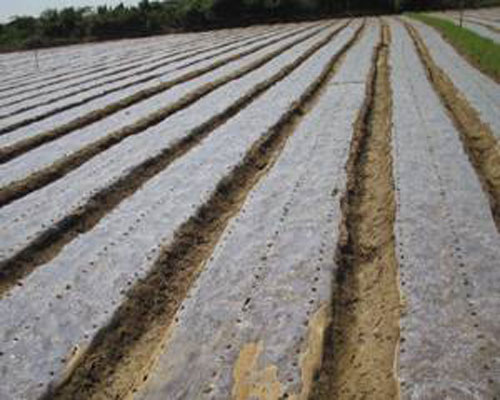Field Preparation


Soil The crop does best on sandy loam and loamy soils and in black soils with good drainage. Heavy and stiff clays are unsuitable for groundnut cultivation as the pod development is hampered in these soils.
Climate The crop can be grown successfully in places receiving a minimum rainfall of 500mm and a maximum rainfall of 1,250mm. The rainfall should be distributed well during the flowering and pegging of the crop. The groundnut cannot stand frost, long and severe drought or water stagnation.1. LAND PREPARATION
- Plough with tractor using a disc followed by harrow, once or twice with iron plough or 3 - 4 times with country plough till all the clods are broken and a fine tilth is obtained.
- Chiselling for soils with hard pan: Chisel the soils having hard pan formation at shallow depth with chisel plough first at 0.5 m interval in one direction and then in the direction perpendicular to the previous one, once in three years. Apply 12.5 t/ha FYM or composted coir pith besides chiseling.
- Amendments for soil surface crusting: a) to tide over the surface crusting, apply lime @ 2 t/ha along with FYM or composted coir pith @ 12.5 t/ha. b) When coir pith at 12.5 t/ha is converted into compost by inoculating with Pleurotus and applied, it serves as a good source of nutrient.
Apply NPK fertilizers as per soil test recommendation. If soil test is not done, follow the blanket recommendation.
| N | P | K | Sulphur sludge |
| 25 | 50 | 75 kg/ha | 60 kg/ha |
N and K in three splits viz., 50 % N & K as basal + 25 % N and K at 20 DAS + 25 % N and K at 45 DAS is recommended.
- Form beds of size 10 m2 to 20 m2 depending upon the availability of water, slope of the land and type of soil.
- Wherever tractor is engaged, bed former may be used.
- Ridges and furrows may be laid at 60cm spacing between ridges and sowing taken on both sides of the ridge
- Raised bed with a width of 60cm and with a furrow of 15cm on either side may be formed and sowing taken on the raised bed

Groundnut is raised mostly as a rainfed kharif crop , being sown from May to June , depending on the monsoon rains. It is sown as late as August or early September. As an irrigated crop it is grown to limited extent between January and March and between in May and July. Well-filled kernels should be selected and treated with 5g of Thiram or 3g of Captan per kg of kernels. The quantity of well-developed seeds required per hectare about 110 kg for semi spreading and spreading varieties and 120kg for the bunch varieties. The kharif crop is sown with a seed drill or with a suitable planter at a depth of 8-10 cm. for semi spreading and spreading varieties, the spacing between at he adjacent rows varies for m30-60cm and within the row from 10-15cm. For the rainfed bunch groundnut the inter-row spacing vary between 20 and 30cm and the intra-row spacing between 10 and 20cm.